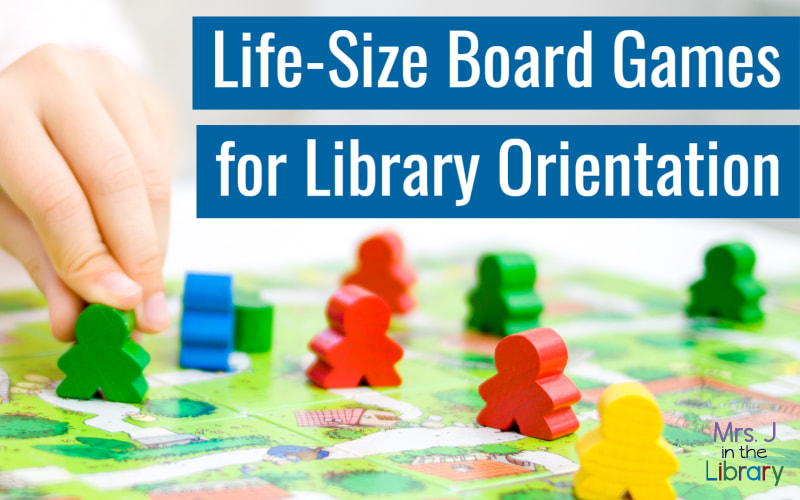The beginning of the year is an important time for teacher-librarians and media specialists as we introduce the library to new and returning students. Every year, I used to struggle to come up with something new and fun for library orientation.
I pick a different library theme each school year.
In past years, my library themes have included:
- Superheroes (which was also our school-wide theme that year)
- Read S’more Books (camping & outdoors)
- Blast Off with Reading (outer space & planets)
- Pirates or Under the Sea Adventures (ocean & beach)
- Go Bananas for Books (rainforest & monkeys)
READ MORE: Cheap and Easy Library Decorations

Disclaimer: This post contains affiliate links, which means if you purchase an item after clicking the link, I will receive a small commission. See Disclosures & Disclaimers for more information.
I often match the 3rd, 4th, and 5th grade library orientation to that theme, and I designed a life-size board game for students to play during their first library class using the whole library as the “game board”.
What I like about playing a game for orientation is that it makes reviewing the library procedures more physically active and engaging. Students aren’t sitting the whole time and listening to me talk; they are working together and helping each other review how the school library works.
Life-size Board Game Format
The library orientation game is played like a life-sized board game (think Candyland™). I place pieces of construction paper on the floor making a path around the library to the different sections and important places. The path makes a full loop or circle around the library space, weaving through each spot I wanted to review or highlight.
Some spaces have a clue card image glued to it, and each group of 3-4 students starts at one of these labeled spaces.
 What Your Students Do:
What Your Students Do:
Students roll a dice and move the number of spaces forward (as a group). When they reach a space with a card on it, they stop to look for a “hidden” card (that matches the one on the space) and answer the question on the card. Then, they put the card back and roll again to move on.
The questions can be numbered, and students might write their answers on a separate sheet of paper, so we could go over them as a class at the end. If I’m short on time, though, I skip writing the answers down and just go over the answers verbally.
Students finish the game by returning to their original “start space” on the game board loop. If they finish early, students can check out books independently before the end of class.



 Supplies You Need:
Supplies You Need:
- 9″ x 12″ construction paper, alternating colors for each square if you prefer
- 8.5″ x 11″ cardstock to print clue cards, 4 per sheet
- 8.5″ x 11″ printer paper
- Scissors or a paper cutter
- Dice, 1 per group of 3-4 students in a class
- Access to a printer
- Small, clear resealable containers to roll the dice inside and keep it from getting lost – optional, but will save your sanity
Try it out!
If you need an easy-prep lesson to introduce your library, there are several different themes to choose from. And if you buy the bundle, you can teach this lesson for several years with a different theme each year.
Alternate Game Format: Scavenger Hunt
When I did the “Under the Sea” theme, groups of 3 or 4 students went on a scavenger hunt all around the library for ocean animals printed on cardstock. On the back of each animal’s card was a question. Students wrote their answers down on a separate sheet of paper, and we reviewed the answers as a class when everyone finished.
Playing the game this way was more chaotic, because some groups would just follow others around to find the animals and listen in on the answers. The game was a lot faster to play, however, so students ended up with more time to check out books.
No matter what the theme or format, I LOVE using games to teach and review library orientation, and I think you will too!
If you have a great strategy or teaching method for the first few days of library class, please share it in the comments below. Happy teaching!